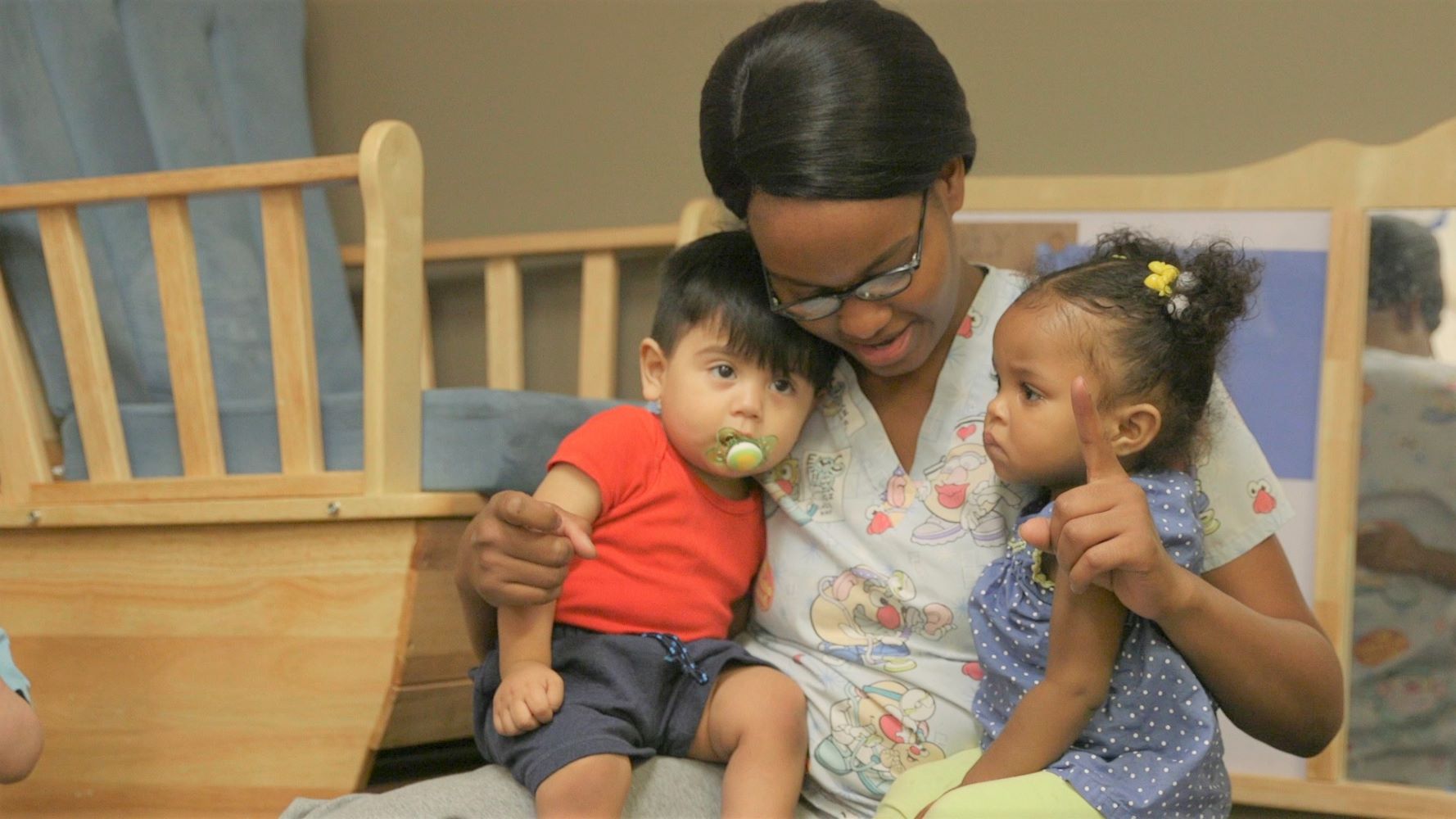
Understanding children’s individual differences helps adults build relationships with infants and toddlers and interact in ways that meet each child’s needs. One of the individual differences mentioned earlier is temperament — behavioral “styles” children are born with that describe how they approach and react to the world. (See Introduction to Temperament on the Center for Early Childhood Mental Health Consultation website. To consider how temperament connects with development, see ELOF domains, Approaches to Learning and Social and Emotional Development.)
Temperament not only affects how infants and toddlers interpret and react to the world around them, it also affects how adults respond to children. Adults have their own unique temperaments, too; compatibility between a child’s and an adult’s temperament can affect the quality of interactions. This compatibility, known as “goodness of fit,” refers to how an adult’s expectations and style of interaction match the child’s style and abilities.[4] Goodness of fit does not require children and adults to have matching temperaments. However, it does require adults to adjust their interaction styles to better support each child’s natural way of responding to the world.
Here is an example of how goodness of fit works in a center-based setting:
Twenty-eight-month-old Sierra stands at the door of her Early Head Start classroom, watching. Even though she has attended the center for over a year, she still takes her time coming into the room. Jandro, her teacher, slowly approaches her, kneels down to her level, and quietly says, “Good morning, Sierra, I’m glad to see you.” Sierra smiles and glances at her dad, who stoops down and says in a soft voice, “See you later, Sierra. Can Daddy give you your special goodbye hug?” Sierra nods and turns to her father. He opens his arms, gathers her in, and gently lifts her until they are face to face, and he gives her a kiss on her nose. He then puts her down and waves his hand as he turns to leave and walks down the hall. Sierra waves her hand in response until she can no longer see him.
Once Sierra’s dad is gone, Jandro takes her hand and leads her to the table for a morning snack. No sooner does he get Sierra settled when 30-month-old Alex comes to the door. Alex runs to Jandro, hugs his leg, and says with great excitement, “We saw a fire truck, we saw a fire truck! The siren was really loud—RRRRRR!!” Jandro, matching Alex’s energy and enthusiasm, exclaims, “Wow, a fire truck! That sounds so exciting!”
These two children have very different temperaments, and Jandro is keenly aware of this. Through his program’s professional development offerings on responsive care, he has learned over time that how he responds to different temperaments really makes a difference. When he changes his pace and approach to better match each child’s temperament, he forms a stronger relationship with that child and is better able to support his or her development and learning.
[4]U.S Department of Health and Human Services, Administration for Children, Youth, and Families, Office of Head Start, Center for Early Childhood Mental Health Consultation, Introduction to Temperament (Washington, DC, n.d.).
Read more:
Resource Type: Article
National Centers: Early Childhood Development, Teaching and Learning
Last Updated: December 22, 2020